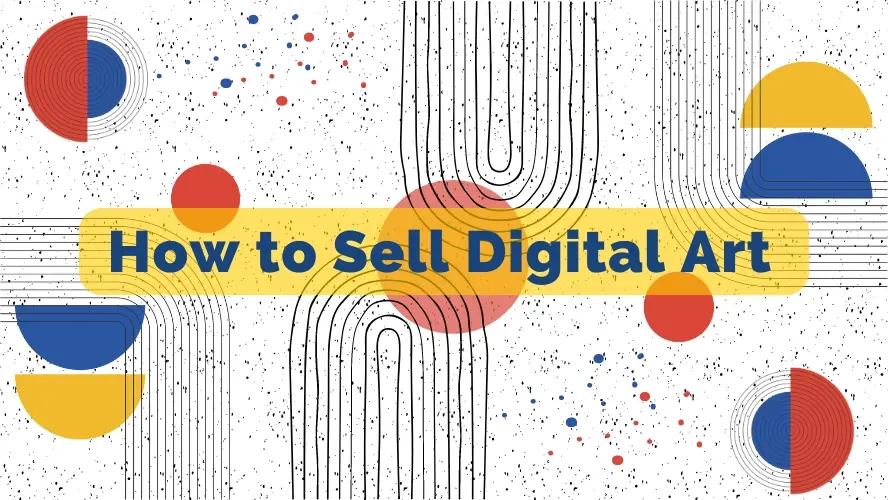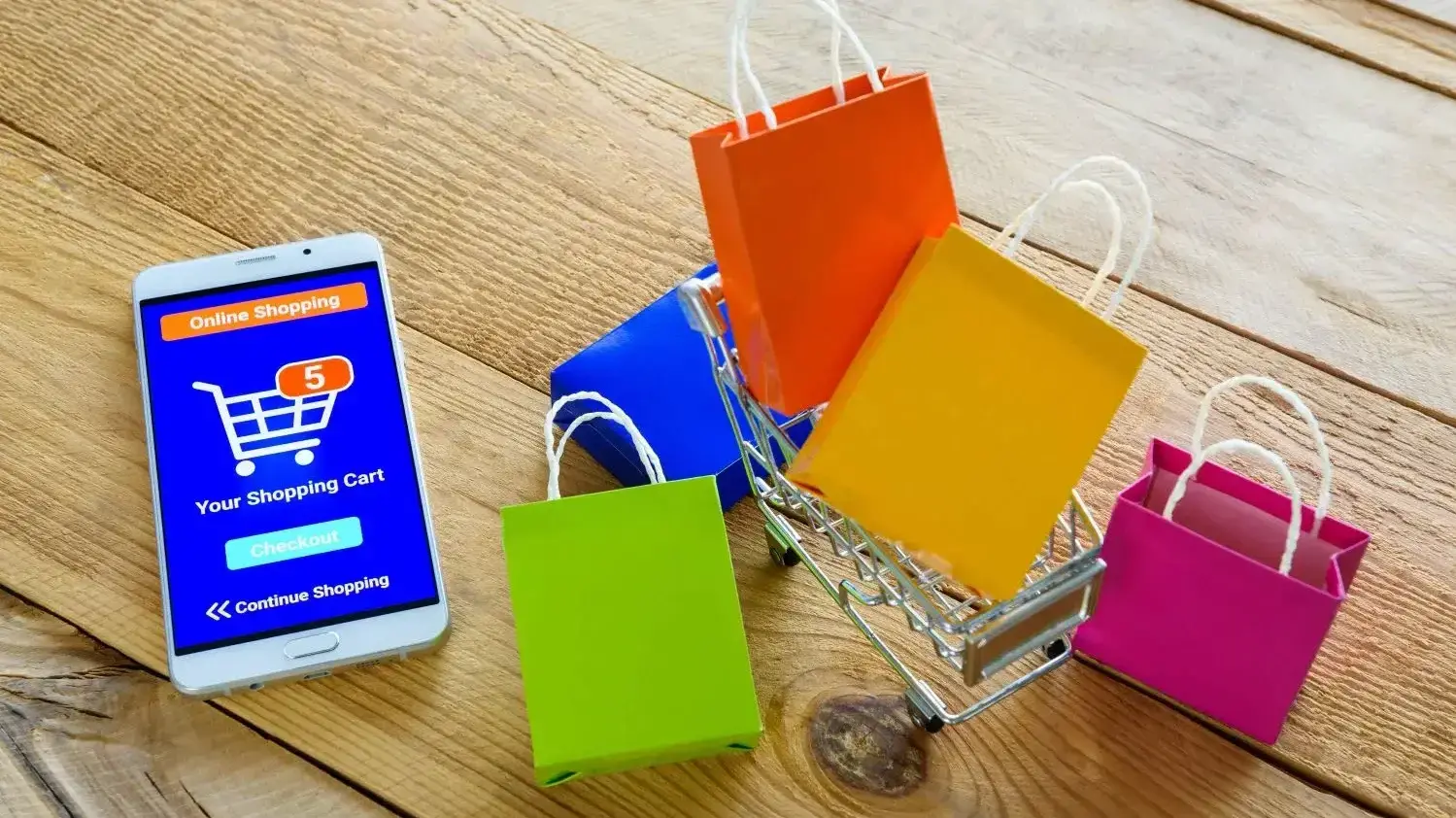The art world is undergoing a significant transformation. Artists are exploring new mediums and pushing the boundaries of traditional forms. Digital art, virtual reality installations, and interactive experiences are becoming more prevalent, inviting audiences to engage with art in innovative ways.
Once a niche field, digital art is now exploding in popularity. From mesmerizing illustrations to captivating animations, artists push the boundaries of creativity with digital tools. But how do you, as a digital artist, turn your passion into profit? This comprehensive guide will equip you with the knowledge and strategies to successfully sell your digital art in the flourishing online marketplace.
Building Your Brand and Audience
Before diving into sales, focus on building a strong brand identity as an artist, it’s crucial to develop a clear and consistent message that reflects your unique style and vision. This step involves:
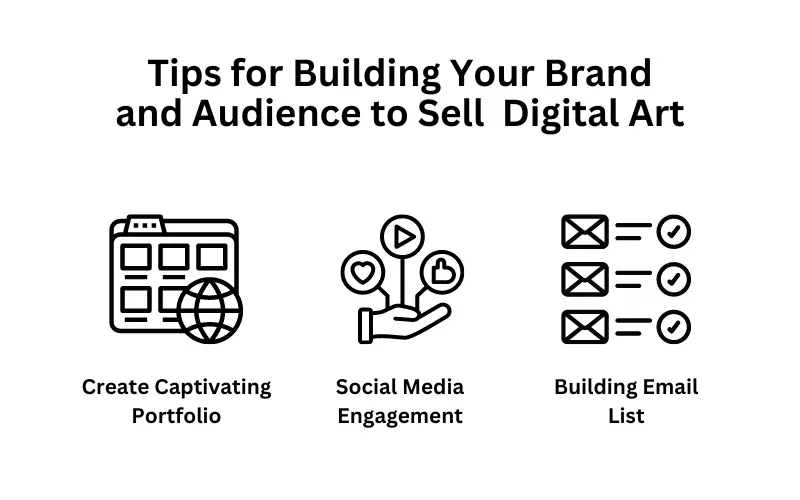
Creating a Captivating Portfolio: Showcase your best work on a user-friendly website or online platform. Ensure high-resolution images and clear descriptions of your pieces.
Social Media Engagement: Be active on relevant social media platforms like Instagram, Twitter, and DeviantArt. Share your creative process, interact with other artists and potential collectors, and participate in online art communities.
Building an Email List: Encourage visitors to your website or social media to subscribe to your email list. This allows you to announce new artwork, upcoming projects, and special offers directly to interested collectors.
Building a Sustainable Art Business
Selling digital art is an ongoing journey. Here are some tips for long-term success:
Continuously Refine Your Craft: Keep learning and experimenting to elevate your skills and stay current with industry trends.
Network with Other Artists: Collaborate with other artists, participate in online communities, attend art events to build relationships, online business networking, and expand your reach.
Explore Additional Revenue Streams: Consider offering creative services like commissions, tutorials, or online courses to diversify your income sources.
Embrace Marketing and Promotion: Actively promote your artwork across various channels, including social media, online communities, and art blogs.
Presenting and Delivering Your Art Professionally
It is an essential skill for any artist looking to make a mark in the creative world. It's not just about creating beautiful pieces but also about how you showcase and communicate your work to the audience. Here are some tips to help you present and deliver your art professionally:
High-Resolution Files: Always provide high-resolution files to buyers, ensuring the artwork can be printed or displayed in high quality.
Secure Delivery Methods: Use reputable file-sharing platforms or cloud storage services to deliver your artwork securely.
Clear Communication: Maintain clear communication with buyers throughout the sales process. Address any questions promptly and professionally.
Crafting Compelling Digital Art for Sale
Once you've created pieces you're proud of, and made your brand identity stronger as an artist, it's time to think about presentation. Here are some tips to craft compelling digital art for sale that you can try:
Identify Your Niche: The digital art market is vast. Explore different styles – illustrations, character design, animation, or 3D art – and find a niche where you excel and can build a dedicated following.
Quality over Quantity: Prioritize high-quality artwork. Invest in learning new software and techniques to refine your skills and create visually stunning pieces.
Trend Awareness: Stay informed about current trends in the digital art market. Consider incorporating popular themes or aesthetics into your work while staying true to your unique style.
Storytelling Through Art: Infuse your artwork with emotions, narratives, or hidden meanings to create a deeper connection with viewers.
Pricing Your Digital Art
There's no one-size-fits-all approach to pricing your artwork. Every artist's journey is unique, and so too are the factors that determine the value of their creations. Here are some points to consider:
Your Experience and Reputation: As your skills and recognition grow, you can justify higher prices.
Artwork Usage Rights: Selling limited edition prints or offering exclusive commercial use licenses can increase the value.
Market Research: Analyze the prices of similar artworks by established artists in your niche.
Pricing Strategies
Implementing pricing strategies can effectively sell digital art and maximize sales potential. Here are some effective pricing strategies for selling digital art:
Hourly Rate: Multiply your desired hourly wage by the time spent creating the artwork.
Project-Based Pricing: Determine a fixed price for the entire project, considering all factors mentioned above.
Tiered Pricing: Offer different versions of the artwork (e.g., high-resolution file, prints) at varying price points.
Pro Tip: Don't undervalue your work! While remaining competitive, price your art confidently to reflect the time, skill, and value you bring.
Understanding NFTs and Blockchain Technology to Sell Digital Art
NFTs (Non-Fungible Tokens) have revolutionized the digital art market by providing a secure and verifiable way to own and trade digital assets. Here's a simplified explanation:
An NFT is a unique digital certificate linked to a specific digital artwork stored on a blockchain, a secure digital ledger.
Owning an NFT grants the collector verifiable ownership of the artwork and associated rights.
Platforms like Foundation and SuperRare specialize in NFT-based digital art sales, offering a unique selling proposition for collectors seeking one-of-a-kind pieces.
Important Note: The NFT market is still evolving, and there are complexities and risks involved. Conduct thorough research before deciding to sell your art as NFTs.
Target Audience Types for Selling Digital Art
The world of digital art collectors is vast and varied. Artists and collectors alike are finding innovative ways to express and value creativity. Here's a breakdown of some key target audience types to consider when tailoring your digital marketing and sales strategy:
**Art Enthusiasts and Collectors:
Fine Art Collectors: This group seeks high-value, investment-worthy pieces. They might be interested in limited edition NFT artworks or high-resolution digital paintings for printing.
Contemporary Art Lovers: This audience appreciates cutting-edge styles and emerging artists. They might be drawn to unique digital sculptures, interactive installations, or experimental animation pieces.
Fan Art Collectors: This group collects artwork depicting characters or scenes from their favorite movies, games, or books. They might be interested in officially licensed fan art or artist-created interpretations.
Tech-Savvy Audiences:
Cryptocurrency Enthusiasts: This cryptocurrency audience is familiar with blockchain technology and interested in collecting NFTs. They might be drawn to the novelty and potential investment value of owning digital art on the blockchain.
Gamers and Metaverse Users: This group frequents virtual worlds and online games. They might be interested in digital avatars, wearables, or in-game assets created by artists.
Design Professionals and Businesses:
Graphic Designers and Web Designers: This group seeks high-quality digital assets like illustrations, icons, and vector graphics for their design projects. They might be drawn to marketplaces like Creative Market or Envato Elements.
Marketing and Advertising Agencies: These agencies require creative assets for marketing campaigns, social media content, and website design. They might be interested in licensing your artwork for commercial use.
Niche Audience Segments:
Animal Lovers: This group seeks artwork featuring animals, wildlife photography, or pet portraits.
Nature Enthusiasts: This audience appreciates landscapes, seascapes, and other nature-inspired digital art.
Minimalist Art Fans: This group gravitates towards clean lines, geometric shapes, and simple compositions in digital art.
Remember:
You can target multiple audience segments with your digital art.
Research online communities and forums frequented by your target audience.
Tailor your social media content and marketing messages to resonate with their specific interests.
By understanding your target audience, you can effectively connect with potential collectors and build a loyal following.
Understanding the Digital Art Market Ecosystem
The digital art market is a diverse ecosystem with various avenues for selling your work. Whether you are a seasoned artist or just starting out, there are numerous platforms and strategies you can explore to reach potential buyers. Understanding the different platforms and their target audiences is crucial for tailoring your approach.
Here's a breakdown of the prominent players:
Online Marketplaces: Dedicated platforms like Foundation, SuperRare, and KnownOrigin cater specifically to digital art, often leveraging blockchain technology (NFTs) to ensure authenticity and ownership.
Print-on-Demand Services: Platforms like Society6 and Redbubble allow you to upload your artwork and have it printed on various products like t-shirts, phone cases, and mugs.
Stock Art Websites: Sites like Shutterstock and Adobe Stock offer a licensing model where artists upload their creations for designers and businesses to purchase for commercial use.
Direct Sales: You can establish your own online presence through a professional website or social media platforms like Instagram and ArtStation, allowing collectors to directly purchase your work.
Recommended Marketplace Platforms for Selling Digital Art
The recommended marketplace for selling digital art depends on several factors, including your target audience, the type of art you create, and your comfort level with new technologies like NFTs. Here's a breakdown to help you choose the best platform:
For established artists with a dedicated following:
- Foundation, SuperRare, KnownOrigin: These platforms cater to high-value, unique NFT artworks. They attract serious collectors willing to pay premium prices for one-of-a-kind pieces. However, there's often an application process to become a seller, and the NFT market can be complex for beginners.
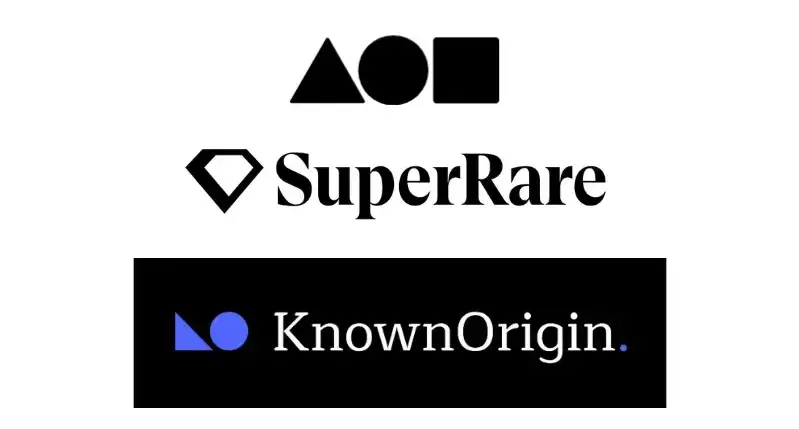
For reaching a broad audience and sell various digital art formats:
- Creative Market, Envato Elements, Design Cuts: These marketplaces focus on downloadable digital assets like illustrations, fonts, and templates. They're ideal for selling graphic design resources and cater to designers and businesses looking for creative assets for their projects.
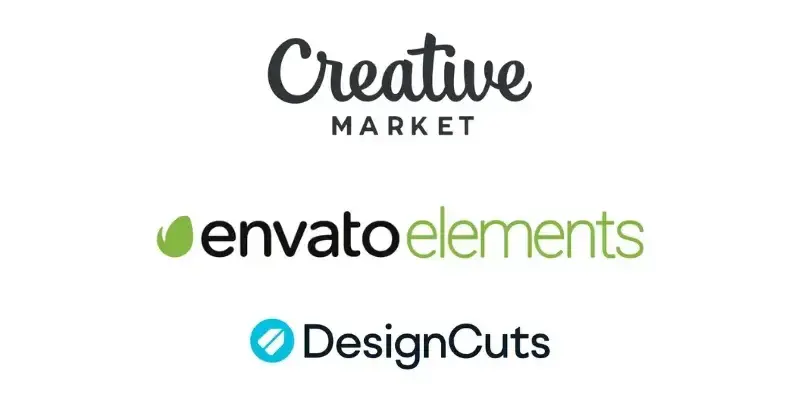
For selling digital art on physical products:
- Society6, Redbubble, Zazzle: These Print-on-Demand (POD) services allow you to upload your artwork and have it printed on various products like t-shirts, phone cases, and mugs. They offer a great way to reach a broad audience and potentially generate passive income.
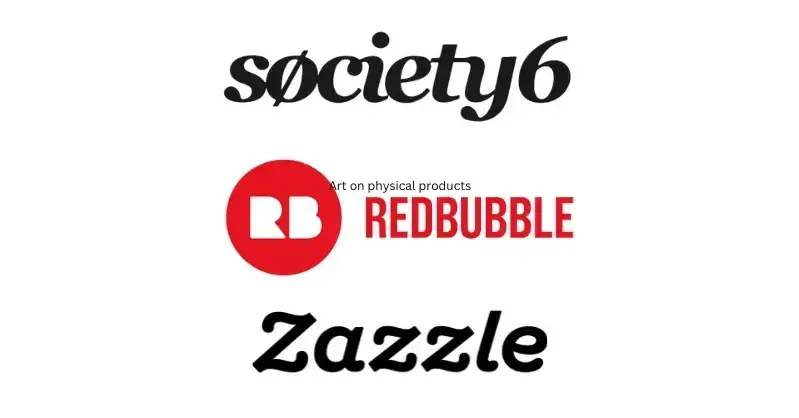
For building a direct connection with collectors:
- Your Website: This gives you complete control over branding, pricing, and customer interactions. However, building an audience and driving traffic to your website requires significant marketing effort.
Here's a quick recommendation table to summarize:
| Marketplace | Ideal for | Pros | Cons |
|---|---|---|---|
| Foundation, SuperRare, KnownOrigin | Established artists, unique NFT art | High potential earnings, serious collectors | Complex NFT market, application process |
| Creative Market, Envato Elements, Design Cuts | Graphic design assets, downloadable art | Large audience, recurring income | Lower potential earnings per piece |
| Society6, Redbubble, Zazzle | Art on physical products | Passive income, broad audience reach | Limited control over product quality |
| Your Own Website | Direct connection with collectors, full control | Brand building, premium pricing | Requires marketing effort, building an audience |
Choosing the Right Platform to Sell
Consider Your Target Audience: Research the demographics and interests of the collectors on each platform. For example, Foundation might be ideal for collectors interested in high-value, unique NFT artworks, while Society6 caters to a broader audience seeking everyday products featuring artistic designs.
Platform Fees and Royalties: Understand the commission structure and any associated fees for listing and selling your work. Some platforms offer royalty structures for secondary sales, allowing you to earn a percentage whenever your artwork is resold.
Marketing and Community Features: Some platforms offer built-in promotional tools or have established art communities that can help you gain exposure to your work.
Conclusion
You can explore selling on multiple platforms to reach different audiences and diversify your income streams. As you gain experience and your brand grows, you can refine your approach and choose the marketplaces that best suit your evolving artistic journey.
Following these strategies and consistently creating high-quality artwork, you can establish a thriving digital art business and turn your passion into a sustainable career. Remember, success takes time and dedication.
Frequently Asked Questions
How do digital or online escrow services work for virtual products or services?
They hold digital assets or payments until conditions are met, ensuring both parties' satisfaction.
Do artists still need a website?
Yes. With people online more than ever, and online searches at an all-time high, having an artist website is crucial. Artists can use their website as a professional hub to showcase their work, connect with audiences, and sell their art directly.
How Can I Measure the Success of My E-Business?
The success of E-Business can be measured through key performance indicators (KPIs) such as conversion rates, customer acquisition costs, and website traffic. Additionally, customer feedback and financial performance evaluations are essential metrics.

Audee Mirza is a graphic designer and WordPress developer at audeemirza.com who resides in Surabaya, Indonesia. She's also the author of Graphic Identity Blog, a professional logo designer, and often creates vector illustrations for clients and marketplaces. She enjoys good typography design and all kinds of animation.
View all posts by Audee Mirza















